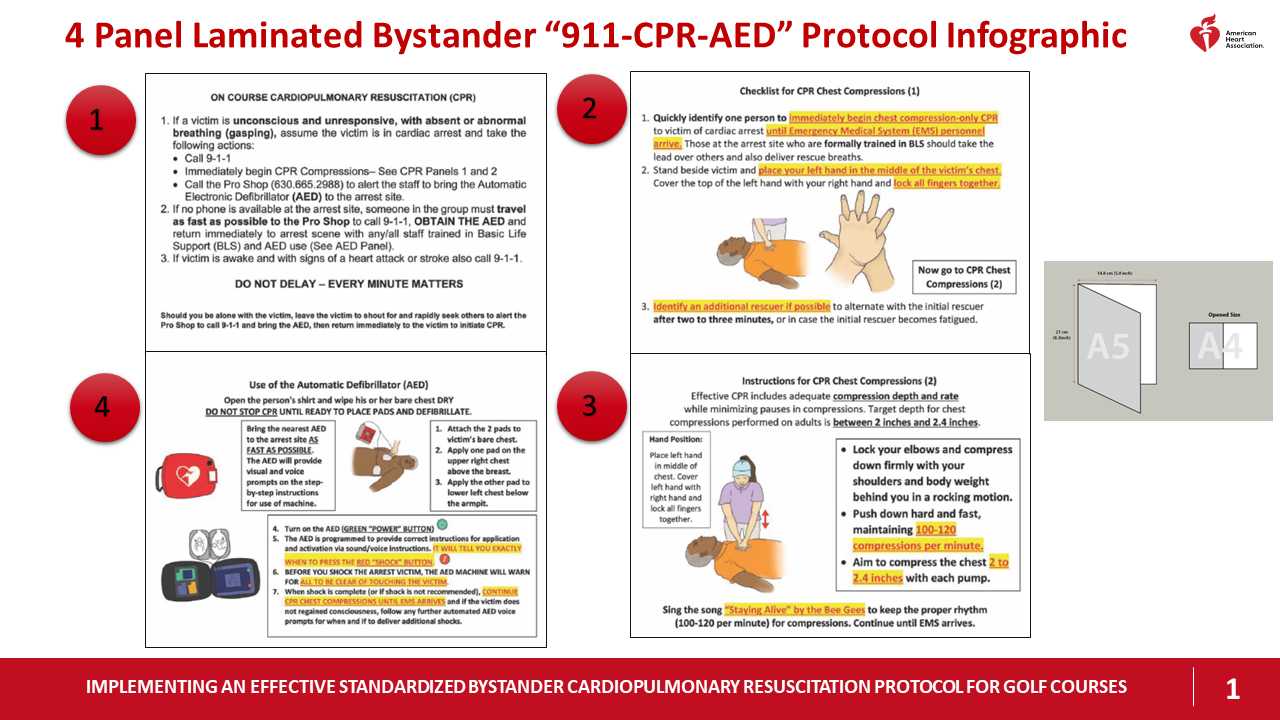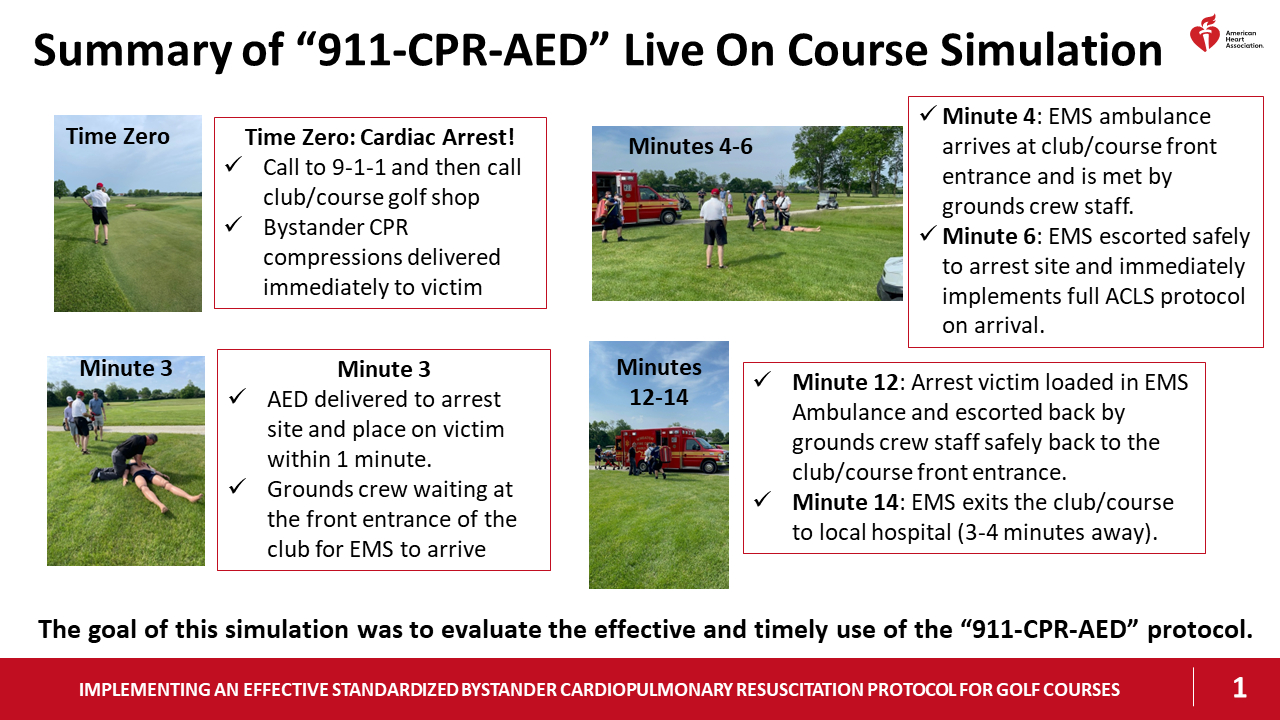Final ID: Su407
Implementing An Effective Standardized Bystander CPR Protocol For US Golf Courses
Abstract Body: Background A golf course is the fifth most common public place for cardiac arrest (CA). Informal interviews with golfers and golf course personnel revealed striking incomplete and variable knowledge about what to do in the event of a CA on a golf course in accordance with most current bystander resuscitation guidelines. Hypothesis We hypothesized that the development and implementation of a standardized protocol (called “911-CPR-AED”) for the three most critical first steps to assure aperson’s survival of an on-golf course CA will improve chances of surviving if playing partners, caddies and club staff are well prepared to respond urgently and appropriately to such an emergency. Aim To successfully implement the standardized “911-CPR-AED” protocol for 4 different golf clubs. Approach We achieved full support and involvement of the Club Boards, professional staff, club management, grounds crew and membership as well as coordination with local Emergency Medical Systems (EMS) and communications to all golfers and caddies. We created a specific four-panel laminated infographic customized for each club and designed to fit easily into every golfer’s bag and caddy vest, assuring a readily available “911-CPR-AED” guide for lay bystanders to notify EMS and Club staff, immediately initiate chest compressions, ensure rapid delivery of an AED and BLS certified persons to the arrest site, and safely guide EMS on their arrival. We also staged live “dry run’ simulations on the golf courses with all key team members and timed each and every step of the simulation from start to finish. All aspects of this process were shared with leaders of the closest EMS and hospital emergency departments (EDs). Results Within the past 2 years, we have successfully implemented a standardized emergency resuscitation protocol we call “911-CPR-AED” at 4 different golf clubs for immediate initiation of bystander CPR in the event of full CA on a golf course. Since implementation, we have witnessed 3 CA events and achieved successful full “on course” resuscitations that deployed this protocol for all three survivors who are now back to playing golf. We intend to share the details and many lessons learned for these ongoing efforts. Conclusion An effective, standard bystander CPR protocol now exists for use at any US golf course. We intend to expand Implementation to 3 new golf courses and will continue to raise awareness and encourage widespread local implementation across the US.
More abstracts on this topic:
Knowledge retention and safety in decision-making in basic life support maneuvers by professionals in public elementary education after training conducted by academics in the health field
Ozorio Fernandes Geovani, Martins Beserra Cristiano, Luisa Tarrio Ferraz De Almeida Ana, Da Silva Sales Lays, Azevedo Antonio Gil, Teofilo De Carvalho Haroldo, Fioretto Jose Roberto, Martin Joelma
A Hospital-Wide Multidimensional Approach to Pediatric In-Hospital Cardiac Arrest Review: Early Identification and PreventionLoeb Daniel, Collins Kelly, Ortega Karina, Dewan Maya


